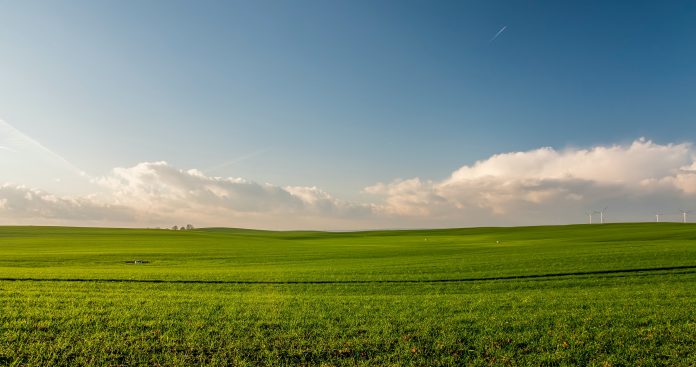Have you ever dreamed of becoming a land steward? Managing a large tract of land and developing plans to make it thrive? Sustainable forestry management is an adventurous and rewarding journey, one that will leave the world better than it came.
With careful planning and an understanding of sustainable methods, you can develop your own forestry management plan for long-term success. In this blog post, we’ll discuss the fundamentals of forest conservation, how to assess current conditions on your property and create an actionable plan tailored for sustainability.
By implementing sound strategies along with support from local foresters or organizations in your area, you’ll be well on your way to maintaining a healthy family forest!
Overview of Sustainable Forestry Management and Its Benefits
The management of our forests is crucial to the sustainability of our planet, and sustainable forestry management provides a solution that benefits both our environment and global communities.
It involves the careful monitoring and maintenance of forests, ensuring they continue to thrive for generations to come. Sustainable forestry management also considers factors such as biodiversity, soil health, and carbon sequestration, making it an all-encompassing approach to forest care. Browse biodiversity net gain units for sale at legacyhb.co.uk. And those who are looking for a luxurious, yet affordable place to call home in the Myrtle Beach area may check out New Homes for Sale in Myrtle Beach.
By implementing sustainable forestry management, we can safeguard against deforestation, promote economic growth, and mitigate the impacts of climate change. It’s an exciting journey, full of adventure as we work towards creating a greener and healthier planet for all.
Identifying the Key Components of a Successful Management Plan
A successful management plan may seem like a towering feat, but it’s more attainable than you may think. Several different key components contribute to an effective management plan, but the first and most important step is to have a clear and concise idea of your objectives.
It’s crucial to have a deep understanding of what you hope to achieve with your plan, as well as a realistic idea of the resources you have at your disposal. Beyond that, a well-rounded management plan should include strategies for delegating responsibilities, setting up a system for communication and feedback, and maintaining a positive work environment.
Developing a management plan may seem like a daunting task, but don’t be afraid to dive in and experiment with different approaches. Remember: with a little patience and a lot of perseverance, anything is possible!
Analyzing Existing Forest Resources and Mapping Out Their Potential
The forest holds many secrets waiting to be uncovered. It’s a world brimming with life and potential, and there’s so much we can learn from it.
By analyzing the existing forest resources and mapping out their potential, we can begin to understand the intricate web of life that exists within this beautiful ecosystem. It’s an adventure in learning, discovering what makes the forest thrive, and understanding what we can do to help preserve it.
With every discovery, we can take steps toward building a sustainable future for generations to come. So, let’s grab our maps and delve deep into the heart of the forest, where adventure awaits!
Developing Effective Strategies for Preserving the Health of the Land
Amidst the ever-evolving challenges of climate change and population growth, sustaining the health of the land is critical for our planet’s survival.
As we explore and adventure through the world’s diverse landscapes, we must develop and implement effective strategies for preserving their well-being. From protecting and restoring ecosystems to promoting sustainable agricultural practices, there are various approaches we can take to create a whole new landscape design.
Educating our communities and utilizing innovative technologies are also crucial for preserving the health of the land. By working together, exploring new methods, and advocating for environmental initiatives, we can ensure that the earth’s natural resources remain viable for future generations to come.
Monitoring and Evaluating Progress Regularly to Ensure Success
To achieve success, it is imperative to monitor and evaluate progress regularly. Whether you’re climbing a mountain or running a business, keeping track of where you are and how far you have come is key.
It is an adventure that requires you to stay focused, dedicated, and persistent. Having a clear understanding of milestones and measurable goals is essential to keep track of progress, and it helps you identify areas that need improvement.
A regular review of your progress is not just essential for your personal growth but also for achieving long-term success. Remember, progress monitoring is not just an indicator of how far you’ve come; it’s also an indicator of where you’re going.
Implementing Best Practices for Soil Conservation, Water Management, and Wildfire Prevention
As we navigate the vast and complex ecosystems of our planet, we must implement best practices for soil conservation, water management, and wildfire prevention. For those of us who love getting out into nature, these practices become even more important to preserve the natural beauty of our surroundings.
By protecting the soil and carefully managing our water resources, we can help to maintain the delicate balance of our environment. Additionally, taking steps to prevent wildfires can help ensure that the forests and other natural areas we enjoy remain healthy and resilient for generations to come.
It’s our responsibility to be good stewards of the earth, and by implementing these best practices we can do our part to protect the planet we call home.
As we can see, sustainable forestry management is an important issue that must be taken seriously. By engaging in effective strategies such as identifying key components of a successful plan, analyzing existing resources, creating appropriate strategies to preserve land health, monitoring and evaluating progress often, and implementing the best practices for soil conservation and water management, we can ensure success. Forest management has tangible benefits for the people living near forests, wildlife habitats, and our environment. Through responsible practices, we will have a chance to preserve our forests for generations to come. For this reason, it is important that we all do our part in supporting strategies that adhere to sustainable forest management principles. Let’s make sure our forests flourish – join us today in committing to protecting the lands!













